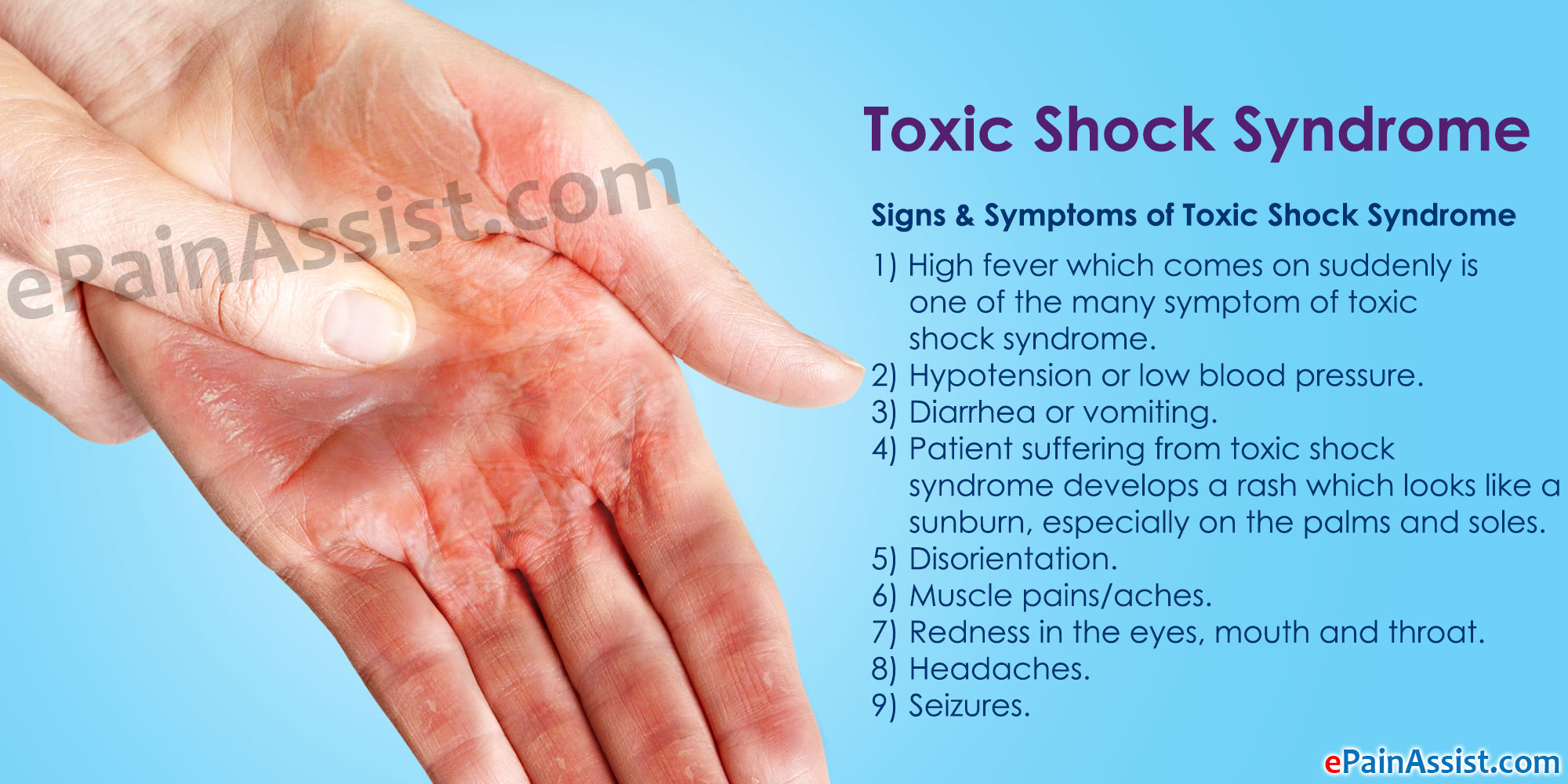What Is Toxic Shock Syndrome?
There are some specific types of bacterial infections which can cause a rare and fatal complication known as Toxic Shock Syndrome. This syndrome commonly occurs as a result of toxins produced by Staphylococcus aureus bacteria; however, toxins produced by other types of bacteria, such as group A streptococcus, can also cause Toxic Shock Syndrome. Toxic shock syndrome largely has been related to the use of superabsorbent tampons. However, the frequency of toxic shock syndrome in menstruating women has decreased after certain tampons have been pulled off the market.
Anybody can be affected by Toxic Shock Syndrome, such as children, men, and postmenopausal women. Individuals who have skin wounds or who have undergone surgery are at a higher risk for developing Toxic Shock Syndrome.
Treatment for Toxic Shock Syndrome comprises of antibiotics, fluids and surgery.
Causes & Risk Factors of Toxic Shock Syndrome
- The most common cause of Toxic Shock Syndrome is Staphylococcus aureus (staph) bacteria. Group A streptococcus bacteria can also cause Toxic Shock Syndrome.
- Menstruating women are at the highest risk for having toxic shock syndrome.
- Individuals with skin injures such as burns or cuts are at an increased risk.
- Individuals who have had recent surgery have a greater risk of having toxic shock syndrome.
- Usage of contraceptive devices like diaphragms, sponges, or superabsorbent tampons increases the risk of toxic shock syndrome.
- Viral infections, such as chickenpox or flu increases the risk of toxic shock syndrome.
Signs & Symptoms of Toxic Shock Syndrome
- High fever which comes on suddenly is one of the many symptom of toxic shock syndrome.
- Hypotension or low blood pressure.
- Diarrhea or vomiting.
- Patient suffering from toxic shock syndrome develops a rash which looks like a sunburn, especially on the palms and soles.
- Disorientation.
- Muscle pains/aches.
- Redness in the eyes, mouth and throat.
- Headaches.
- Seizures.
Diagnosis of Toxic Shock Syndrome
- Blood tests.
- Urine tests.
- A swab is taken from the throat, vagina, cervix and sent to laboratory for analysis.
- Other tests like CT scan, chest x-ray, lumbar puncture are done to assess the damage to other organs and to determine the extent of toxic shock syndrome.
Treatment For Toxic Shock Syndrome
- Patient is hospitalized and started on antibiotics during the time which the doctors try to locate the source of infection.
- Medications to stabilize low blood pressure are given to the patient suffering from toxic shock syndrome.
- Patient is started on I.V. fluids for treating dehydration.
- Patient is given other supportive care depending on the signs and symptoms which he/she has.
- Kidney failure can occur as a result of the toxins from bacteria and the associated hypotension. If this happens, then the patient suffering from toxic shock syndrome will need dialysis.
- Surgery for toxic shock syndrome may be required to drain the infection or to debride the necrotic tissue from the site of infection.
Prevention of Toxic Shock Syndrome
- Tampons which were associated with Toxic Shock Syndrome are no longer sold and those particular materials/ designs are also no longer used.
- Whenever using tampons, read the instructions and guidelines carefully.
- Also use the lowest absorbency tampon.
- Change the tampon frequently, (every 4 to 6 hours).
- Alternate using the tampons with sanitary napkins.
- Use mini-pads when the menstrual flow is light.
- If you have a history of Toxic Shock Syndrome or a prior severe staph/ strep infection, then do not use tampons, as this increases the risk of having toxic shock syndrome again.
- If you have any wounds or cuts in the skin, make sure you follow the cleansing and dressing procedure and doctor’s instructions carefully.
- Follow with your surgeon/physician after you have had surgery to monitor/observe the surgical site for any signs of infection.
- Mayo Clinic. “Toxic shock syndrome.” Mayo Clinic. https://www.mayoclinic.org/diseases-conditions/toxic-shock-syndrome/symptoms-causes/syc-20355384
- National Organization for Rare Disorders (NORD). “Toxic Shock Syndrome.” NORD. https://rarediseases.org/rare-diseases/toxic-shock-syndrome/
- MedlinePlus. “Toxic Shock Syndrome.” MedlinePlus. https://medlineplus.gov/ency/article/000653.htm
- Healthline. “Toxic Shock Syndrome.” Healthline. https://www.healthline.com/health/toxic-shock-syndrome
- American Academy of Family Physicians. “Toxic Shock Syndrome: What You Should Know.” FamilyDoctor.org. https://familydoctor.org/condition/toxic-shock-syndrome/
Also Read:
- Septic Shock: Causes, Risk Factors, Signs, Symptoms, Diagnosis, Treatment
- Cardiogenic Shock: Definition, Causes, Risk Factors, Signs & Symptoms, Investigations, Treatment, Prevention
- What is Hypovolemic Shock?
- Diabetic Shock: Causes, Signs, Symptoms, Diagnosis, Treatment, Prevention, Precautions
- Neurogenic Shock: Causes, Signs, Symptoms, Diagnosis, Treatment
- Electric Shock: Causes, Signs, Symptoms, Prevention, Treatment, Prognosis
- What is Spinal Shock and How is it Treated?
- What is Insulin Shock: Causes, Symptoms, Treatment, Prevention, Complications
- What is Anaphylactic Shock: Causes, Symptoms, Treatment, Prognosis, Prevention

